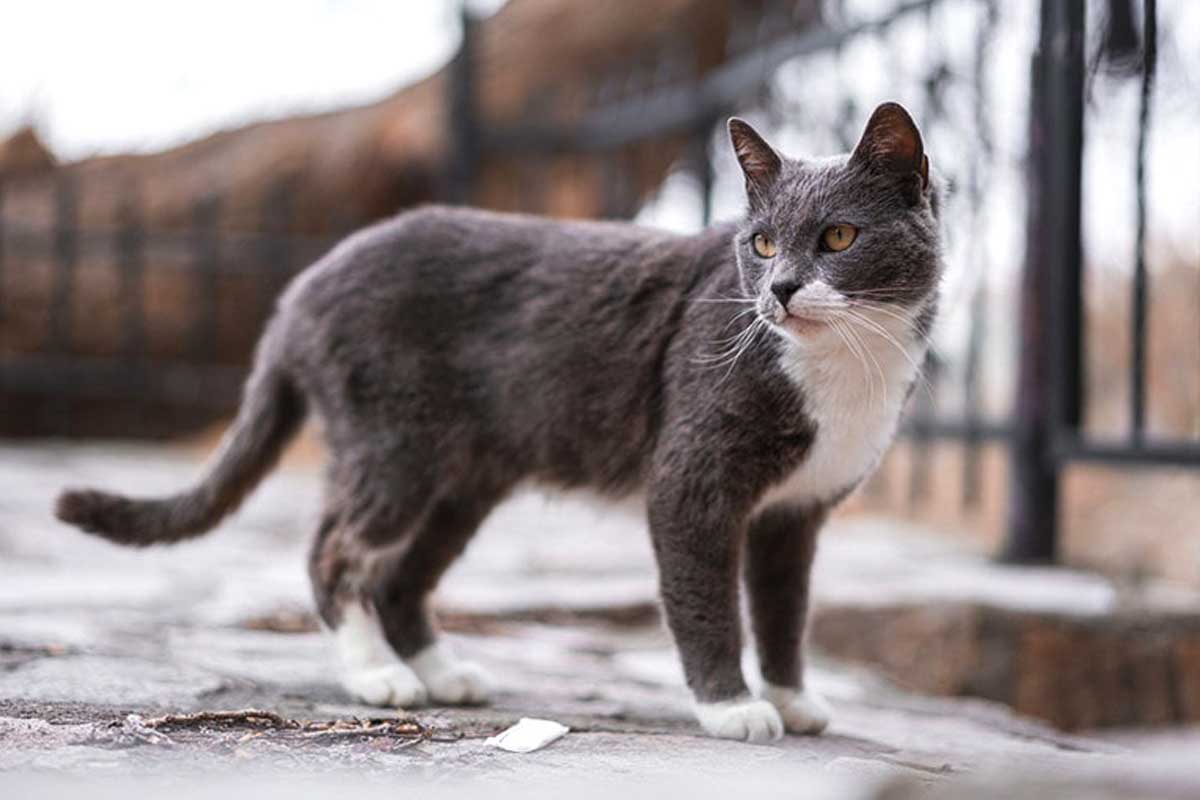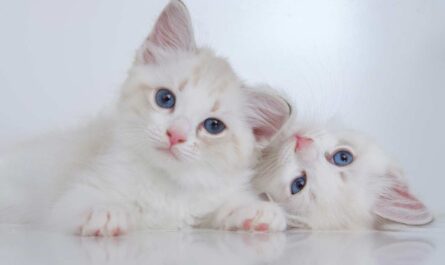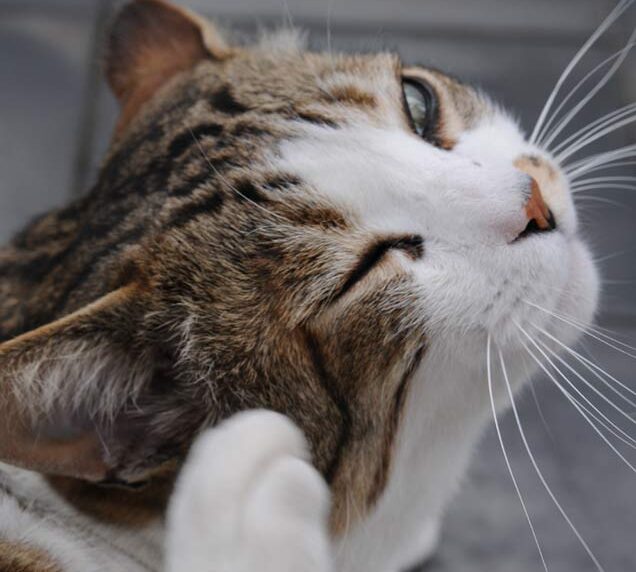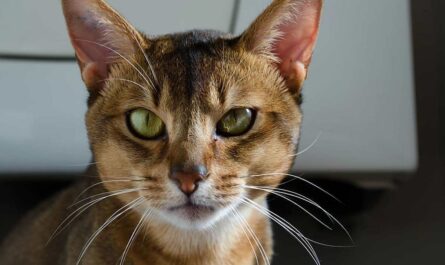What your cat’s tail can tell you? The intricate world of feline communication encompasses a crucial aspect: the tail. A fundamental extension of the spine, a cat’s tail comprises 18 to 23 small bones, extending the spine’s reach beyond the pelvis. Varying in length, the average female cat boasts a 25cm tail, what a cat tail can tell you? while their male counterparts measure 28cm. Larger breeds, exemplified by the majestic Maine Coons, flaunt tails stretching up to an impressive 40cm. This tail, enveloped in connective tissue, blood vessels, muscle, skin, and fur, is not merely a physical appendage but a richly innervated instrument granting cats the finesse to convey emotions both subtly and emphatically.
Decoding Your Cat’s Tail Language
In the intricate tapestry of feline communication, the tail plays a pivotal role. It is a nuanced communicator, revealing a cat’s moods, emotions, and intentions. The tail’s movements speak volumes, akin to the expressive power of purrs, meows, or yowls. Understanding this silent language grants pet owners invaluable insight into their feline companion’s thoughts and behaviors. The tail’s myriad movements, though seemingly limitless, adhere to certain common positions, each indicative of specific feline expressions.
1. Tail Held Vertical: The Friendly Invitation
Envision the enchanting scene of a feline companion, a maestro of social cues, extending a friendly invitation through the eloquent artistry of its tail. Picture the elegant curvature resembling a “question mark,” a dance of vulnerability and trust. The seemingly unassuming act of raising the tail unveils a profound social gesture, what your cat’s tail can tell you, a deliberate revelation of the cat’s intimate anal sac region. This is not a mere physical action; it is a manifestation of the feline’s willingness to engage intimately. Accompanied by the soft serenade of purring, the question-mark tail becomes a genuine greeting, a silent proclamation that echoes, “I am here, a loyal and affectionate companion, ready to share moments of joy and connection.”
2. Tail Wrapped Around Another Creature: Affectionate Bonding
Embark on a fascinating exploration of feline communication, and you’ll encounter the poetic elegance of a cat delicately wrapping its tail around another being. This gesture transcends the realm of mere physical contact; it unfurls as a symbolic dance, a manifestation of profound affection. In this intricate ballet, the cat not only shares warmth but also engages in a subtle exchange of scents—a feline parallel to the human act of petting.
Whether encircling a leg with a gentle embrace or playfully curling around a companion’s tail, this silent proclamation unveils a desire for a connection that transcends the physical, emphasizing the cat’s yearning for deep emotional bonding.
3. Low Wagging: A Subtle Communication in Feline Behavior
The subtle art of feline communication often manifests through nuanced gestures, and one such expression is the low flick tail wagging. When you observe your feline companion engaged in this behavior, you’ll notice a rapid back-and-forth motion of their tail. This delicate movement speaks volumes about their current state of mind. It’s a sign that they are experiencing a blend of caution and curiosity, suggesting that the cat might need some personal space. The quickness of the wag and the low position of the tail collectively convey a message of guarded interest, urging you to be mindful of their need for a momentary withdrawal.
5. Hiding the Tail: A Silent Language of Feline Emotion
Hiding the tail is more than a mere physical maneuver for cats; it is a complex form of communication. Far from being an indicator of aggression, tucking away or concealing the tail is a nuanced signal of fear or submission. When a cat feels threatened or overwhelmed by a situation, this instinctual response manifests as the retreat of its tail. Observing this behavior unveils a deeper layer of feline emotions, providing valuable insights into their intricate social dynamics.
Beyond a simple tuck, cats exhibit a more extreme form of tail concealment when confronted with stress. In times of heightened anxiety or overwhelming situations, a cat may opt to completely shroud its tail under its legs. This behavior is a poignant expression of distress, what your cat’s tail can tell you, akin to a protective shield against the external stimuli causing unease. Each tucked whisker becomes a brushstroke on the canvas of feline communication, revealing the intricate masterpiece of emotions hidden beneath the fur.
6. Wrapping Tail: A Graceful Display of Feline Affection
Cats, being the enigmatic creatures they are, express affection in various subtle ways, and one such elegant gesture is tail wrapping. Picture this: your feline friend gracefully encircling their tail around your hand, arm, or even your neck. This action is a heartwarming display of their willingness to engage and share affection. It’s a sign that your cat feels comfortable and secure in your presence, choosing to intertwine their tail with you in a symbolic embrace. This act is not merely physical; it carries an emotional weight, a feline declaration of love and companionship.
7. Flicking the Tip of the Tail: Curiosity or Irritation
Enter the enigmatic world of a cat’s tail tip—a delicate pendulum that gracefully oscillates between curiosity and the potential for irritation. Unraveling the mystery concealed within these subtle flicks becomes a skill for astute cat owners, as they decipher the cryptic code that unveils the intricate layers of the feline psyche.
Is the tail tip’s dance a harbinger of impending annoyance, or does it signify the manifestation of playful inquisitiveness directed towards a nearby toy? In this artful communication, the flicking tail tip transforms into an early warning system, demanding the attention and interpretation of those who seek to understand the nuanced tapestry of feline behavior.
8. Tail Wagging: Expressing Ambivalence
When you find yourself captivated by the sight of a cat’s tail gently swaying from side to side, it’s as though you’re witnessing a sophisticated ballet of indecision. The subtle undulations of the tail are not mere physical movements; they are a silent unveiling of the intricate conflicts brewing within the feline’s inner world.
Whether engaged in a tense confrontation with a feline counterpart or stealthily stalking prey, what your cat’s tail can tell you, the deliberate sways of the tail act as an artistic expression, crafting a visual narrative of uncertainty and contemplation within the depths of the feline psyche. Each rhythmic motion becomes a stroke on the canvas, portraying a pivotal moment in the cat’s decision-making process with nuanced elegance.
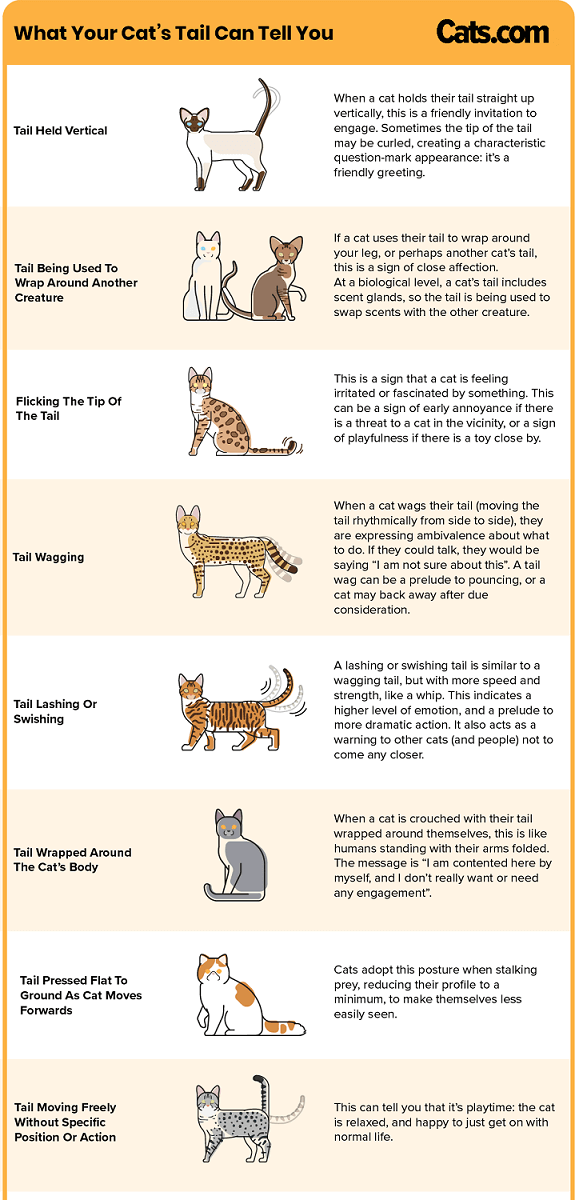
9. Tail Quick Twitching: A Sign of Uncertainty
The subtle nuances of a cat’s tail movements can reveal a rich tapestry of emotions, providing insight into their feline psyche. One such intriguing behavior is the quick twitching of the tail. When a cat holds its tail out behind but angles it up, it may be conveying a sense of uncertainty, a delicate dance of conflicting emotions. This seemingly contradictory posture suggests that the feline is navigating a realm of mixed feelings, unsure of how to interpret the current situation. The tail becomes a silent communicator, painting a canvas of emotional ambiguity.
In the complex language of feline expressions, a tail held behind angled up, and away from the body but engaged in twitching introduces an additional layer of intricacy. Each twitch may signify a fleeting emotion, a momentary surge of indecision or hesitation. This dance of uncertainty may be imperceptible to the untrained eye, but to a keen observer, it unveils the inner workings of a cat’s emotional state. The twitching tail becomes a rhythmic manifestation of the cat’s internal dialogue, a visual symphony of conflicting sentiments.
10. Straight Up: A Symphony of Confidence and Contentment
Contrastingly, a cat with its tail held straight up provides a harmonious visual cue, a symphony of confidence and contentment. In the feline lexicon, this upright tail serves as a proud banner of happiness, a declaration of self-assurance in its surroundings. The cat, in this stance, what your cat’s tail can tell you, becomes a majestic figure, radiating an aura of comfort and security.
Interpreting the straight-up tail requires delving into the subtleties of feline body language. It is a gesture of unabashed joy, an expression of being entirely at ease in its current environment. The cat, with its tail proudly erect, is not merely content but is also signaling an openness to engagement. It is an invitation for interaction, a silent proclamation that it is receptive to socializing and sharing the moment with those around. The straight-up tail is a visual testament to the feline’s confidence, turning the creature into a regal and approachable presence.
11. Tail Lashing or Swishing: Heightened Emotion
In stark contrast, when a cat’s tail transforms into a rapid, whip-like motion, it orchestrates a ballet that transcends mere aesthetics—it becomes a visceral display of heightened emotions. This swift and intense swishing is far from a whimsical gesture; instead, it serves as a powerful warning encoded in the complex language of feline body movements. The fervent dance of the tail acts as an alert, sending a clear message to fellow felines or discerning humans to tread cautiously.
Often accompanied by vocalizations, this dramatic tail performance becomes a vivid indication that the cat, fueled by surging emotions, might resort to aggression if provoked. It is a dynamic semaphore, signaling an imminent storm of actions that may unfold with unpredictable intensity.
12. Tail Wrapped Around the Cat’s Body: Content Solitude
Within the intricate tapestry of feline expression, a captivating narrative unfolds when a cat chooses to wrap its tail around its own body—an eloquent declaration of contentment and a desire for solitude. In the grand symphony of non-verbal communication, this act, reminiscent of humans folding their arms, what your cat’s tail can tell you, signifies a preference to remain undisturbed. The tail, a versatile appendage, transforms into a self-encircling emblem, delineating an unspoken boundary.
Through this subtle choreography, the cat communicates its yearning to bask in the serene cocoon of its present state. This is not isolation; it’s a poetic ballet of solitude, where the tail becomes a gentle embrace, shielding the cat from the cacophony of external disturbances. It’s a profound expression of satisfaction, a silent affirmation that the feline spirit finds solace in its own company.
13. The Quiver: An Expression of Feline Delight
Picture this: a delightful feline rendezvous where your beloved cat greets you with an endearing quiver in its tail. This particular tail action is undeniably one of the most heartwarming displays of feline emotion, suggesting a bubbling excitement at the sight of its human companion. As your cat approaches, its tail stands tall, a beacon of anticipation and affection. The quiver is akin to a furry exclamation mark, signaling the joyous reunion between you and your four-legged friend.
In this heartening moment, the tail becomes a dynamic storyteller, weaving a narrative of happiness and connection. Its elevated position signifies not just physical proximity but an emotional bond that transcends the language barrier between humans and their feline counterparts. This quiver, a subtle yet significant gesture, encapsulates the essence of the unique and cherished relationship shared between cats and their devoted owners.
14. Whipping Tail: A Symphony of Feline Emotions
On the flip side of the endearing quiver lies the enigmatic realm of the whipping tail—a feline symphony expressing a range of emotions from fear to annoyance and, in some cases, outright anger. When a cat’s tail transforms into a rigid instrument, held low and swishing back and forth with rapid intensity, it becomes a visual overture of its internal state.
This intricate dance of the tail serves as a feline semaphore, communicating sentiments that words cannot encapsulate. The lower positioning of the tail signals a shift from joy to a spectrum of less favorable emotions. The rapid back-and-forth motion paints a canvas of agitation, a warning sign that the cat is not in the mood for interaction. It is the feline version of a red flag, urging those in its vicinity to tread lightly and respect the invisible boundaries that have been set.
15. Tail Pressed Flat to Ground: Stalking Prey
In the intricate dance between feline predator and unsuspecting prey, a peculiar yet strategic behavior emerges when a cat purposefully presses its tail flat against the ground. This deliberate maneuver is not a mere quirk; it unveils the cat’s adeptness in the art of stalking. With the tail serving as a crucial part of its body language repertoire, this flattened posture becomes an essential tool for the feline hunter.
The significance lies in the cat’s instinctive understanding that reducing its profile to the bare minimum is the key to success in the pursuit of prey. By lowering its tail, what your cat’s tail can tell you, the cat minimizes its silhouette, transforming into a shadowy figure that glides surreptitiously through its surroundings. This calculated move enhances the feline’s ability to approach its quarry without betraying its presence, turning the act of stalking into a finely tuned performance where every muscle and sinew is coordinated for maximum effectiveness.
The tail, once a potential giveaway, now becomes a masterstroke in the cat’s silent ballet of predation. It is a display of cunning and skill, a non-verbal declaration that the feline has entered a state of focused determination. Observing this tail-pressed-flat phenomenon is akin to witnessing a hunter embracing the stealthy elegance inherent in the pursuit of sustenance, underscoring the primal instincts that persist within our domesticated companions.
16. Tail Moving Freely Without Specific Position: Calm and Playful
Contrastingly, when a cat’s tail exhibits a spontaneous dance, moving with a fluidity that defies any fixed position, a different narrative unfolds. This whimsical tail behavior is a testament to the feline’s emotional state, providing a window into its inner world. In such moments, the cat is not a stealthy predator but an embodiment of tranquility, suggesting an atmosphere of serenity and contentment.
The tail, moving freely and unhindered, becomes an expressive brushstroke painting the canvas of the cat’s emotional landscape. This lack of a specific position communicates a sense of nonchalance, indicating that the feline is not burdened by stress or tension. Instead, it radiates an aura of ease, revealing a creature comfortable in its surroundings, unthreatened by perceived dangers.
This carefree movement is not merely a passive display; it is an invitation to engage in the joyous realm of feline playfulness. The undulating tail becomes a signal, what your cat’s tail can tell you, a flag unfurling in the breeze of contentment, signaling that the moment is ripe for interaction. It beckons humans and fellow companions to join in the celebration of normalcy and the simple pleasures of life, encapsulating the essence of a carefree and playful existence.
17. Elevated Greetings with a Raised Tail
In the intricate world of feline communication, the raised tail serves as a multifaceted gesture, transcending mere posture into a nuanced language of expression. Beyond its obvious physiological function, a cat’s tail, when held aloft, becomes an emblematic beacon, signaling more than just a physical attribute. Picture this: as your feline companion strides purposefully towards you, tail aloft in regal acknowledgment, it’s not a mere biological occurrence but a symbolic salute.
This seemingly simple gesture speaks volumes about the feline psyche, a raised tail functioning as a bespoke greeting, reserved for the chosen few – be they fellow feline comrades or the revered human in the equation.
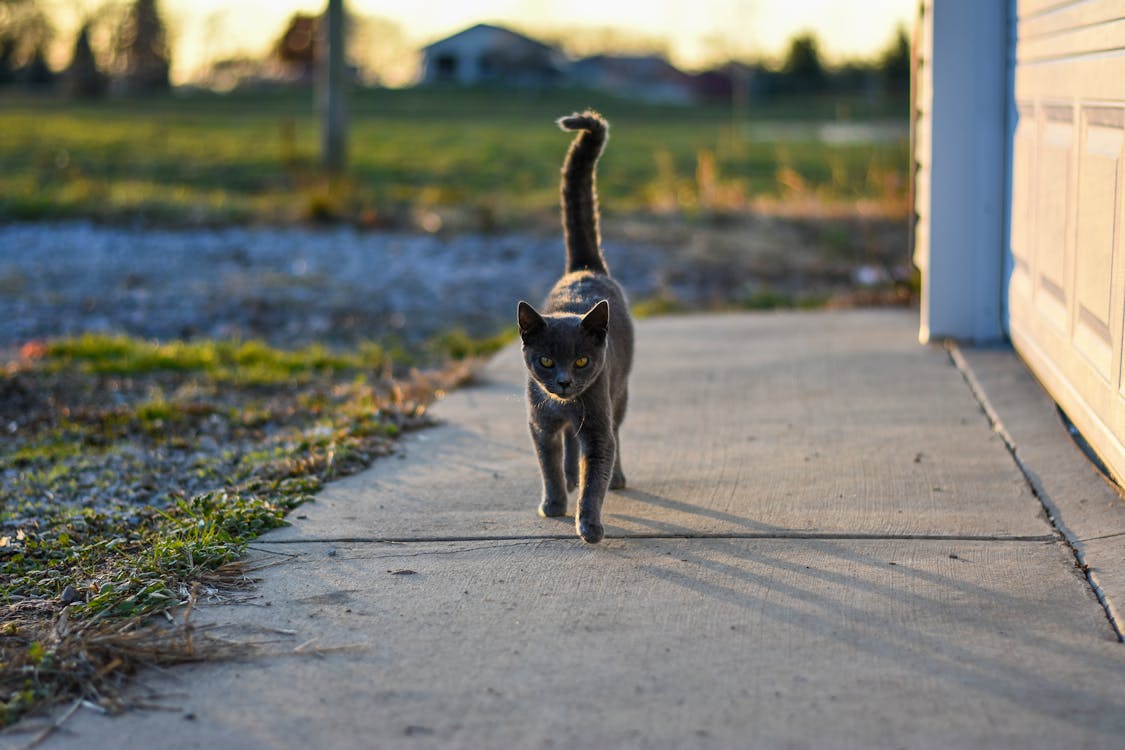
18. The Tumultuous Tale of Tail Flicking
Unraveling the enigma of a cat’s tail becomes all the more intriguing when it ventures into the realm of agitation. The rhythmic dance of a feline tail, oscillating with fervor, transcends mere aesthetic movement. In the lexicon of cat behavior, a waving tail while lying down metamorphoses into a vivid proclamation of discontent.
This isn’t a nonchalant flick or a whimsical swish; it’s a visual semaphore of brewing feline fury. It’s as if the tail itself becomes a brush, painting the air with a portrait of anger. The cat reclined yet radiating intensity, is sending an unequivocal message: “I am perturbed, and the tempest within is on the brink of eruption.”
What does it mean if a cat is wagging its tail?
A cat’s tail can be a fascinating indicator of its emotions and thoughts, acting as a subtle communicator of its inner world. When you observe a cat with a wagging tail, it unveils a nuanced layer of feline behavior. This seemingly innocuous gesture is not merely a random movement; rather, it signifies a state of ambivalence within the feline mind. The cat, what your cat’s tail can tell you, in these moments, is caught in a contemplative pause, unsure about the next course of action. The tail becomes a dynamic expression of the cat’s internal deliberations, offering a glimpse into its intricate thought process.
Why does my cat slap me with his tail?
The enigmatic language of cats extends beyond mere wagging; it includes the forceful slapping or whipping of the tail—a signal that speaks volumes about the feline’s emotional state. When a cat employs this assertive tail movement, it is an unequivocal sign of anger simmering beneath the surface. This action serves as a forewarning that the cat might unleash a sudden, potent reaction in the imminent future. In such moments, discretion becomes paramount.
Taking a step backward is not merely a suggestion but a crucial step to afford the cat the space it urgently requires. Ignoring this warning might result in the cat resorting to defensive measures, potentially leading to bites or scratches.
Do cats have bones in their tails?
Delving into the biological intricacies of a cat’s tail reveals a remarkable extension of its spine. Unlike the human spine, what your cat’s tail can tell you, which concludes at the pelvis, a cat’s spine persists, tapering off into 18 to 23 small bones, spanning a length of 20 to 30 centimeters. The tail is a composition of more than just bones; it encompasses layers of connective tissue, blood vessels, muscles, skin, and fur.
This intricate amalgamation contributes to the tail’s flexibility and functionality, providing the cat with a versatile appendage that aids in balance, communication, and expressing its emotional spectrum. Understanding the tail’s anatomy underscores the importance of this appendage, what your cat’s tail tells you, highlighting its role beyond a mere decorative flourish. Cat accessories on Amazon
Why do cats thump their tails when lying down?
Cats, those enigmatic and graceful creatures, often engage in a peculiar behavior: thumping their tails while lying down. The feline tail, not merely a decorative appendage, plays a vital role in their equilibrium. Analogous to a tightrope walker’s bar, what your cat’s tail can tell you, the tail functions as part of a cat’s balancing equipment. Picture a feline artist delicately walking along a narrow surface, using its tail as a stabilizing brushstroke. However, this elegant appendage serves a dual purpose when the cat reclines.
It transforms into a metaphorical comfortable blanket that the cat deftly wraps around itself, what your cat’s tail tells you, ensuring a secure and settled repose. This seemingly subtle act unveils the sophistication of feline instincts, emphasizing their innate ability to navigate and adapt even in the repose of lounging.
Why do cats flick their tails?
A cat’s tail is an eloquent communicator, capable of conveying a spectrum of emotions. One intriguing behavior that captures the attention of cat enthusiasts is tail flicking. When a cat engages in this swift and rhythmic movement of its tail, it becomes a cryptic signal that demands deciphering. This behavior often emerges in moments of irritation or fascination, prompting cat owners to play the role of detectives. RPM 3.0 – 60% CONVERSION & Money for Affiliate Marketing
To decode the mystery, a vigilant scan of the cat’s environment is essential. Perhaps there is a subtle stimulus captivating the feline’s attention, an object or event that elicits the intriguing flicking of the tail. The tail, like a conductor’s baton, orchestrates a silent symphony of feline emotions, inviting curious observers to unravel the enigmatic narrative.
Why do cats wag their tails?
Cats, regal in their stoic silence, occasionally employ the expressive language of tail wagging. This rhythmic movement, akin to a linguistic dance, signifies a nuanced dialogue of ambivalence. Imagine, if cats could talk, their tails would articulate, “I am not sure about this.” The tail, an extension of the feline psyche, becomes the canvas upon which uncertainty is painted.
In moments of indecision, the tail becomes a semaphore, oscillating from side to side, translating the intricate conflict within the cat’s mind. It is a communication of perplexity, a visual poem of hesitation. The tail’s rhythmic cadence invites observers to ponder the inner deliberations of the cat, creating a tableau of feline psychology that is both mesmerizing and inscrutable. Cat accessories on Amazon
Final thought
As a cat owner, the ability to decipher these tail tales becomes an invaluable skill, enhancing the bond between two distinct species. It is a dance of emotions, an unspoken conversation that transcends verbal communication. Whether understanding the tail language, or what your cat’s tail can tell you, each moment becomes a chapter in the ongoing saga of companionship, understanding, and shared emotions. By delving into the intricate language of a cat’s tail, pet owners can forge a deeper connection with their feline companions. These subtle yet potent signals provide a roadmap to understanding and interpreting the rich tapestry of feline emotions and behaviors, fostering a more profound and enriched relationship.
Other Interesting Articles
- How To Take Care Of A Kitten: A Guide For New Pet Owners
- Why Do Cats Chirp? Major Reasons Behind This Cute Sound
- 10 Common Reasons Why Cats Suckle? How To Discourage
- 12 Reasons Why Cats Meow So Much: How To Mitigate
- 9 Common Reasons Why Cats Chirp or Chatter: 5 FAQs
- Cat Zoomies: Why Does A Cat Get Them? When to Call a Vet?
- Burmilla Cat Breed: Profile, Traits, Grooming, Health, Care
- Aegean Cat Breed: Profile, Traits, Grooming, Health, Care
- American Wirehair Cat Profile, Traits, Grooming, Health, Care
- American Shorthair Cat Profile, Traits, Grooming, Health, Care
- American Polydactyl Cat Profile, Traits, Grooming, Health, Care
- American Longhair: Profile, Traits, Grooming, Health, Care
- American Curl Cat Profile, Traits, Grooming, Health, Care
- Asian Semi-Longhair Cat Profile, Traits, Grooming, Health, Care
- California Spangled Cat: Profile, Traits, Grooming, Health, Care
- Burmilla Cat Breed: Profile, Traits, Grooming, Health, Care
- British Shorthair Cat: Profile, Traits, Grooming, Health, Care
- Brazilian Shorthair Cat: Profile, Traits, Grooming, Health, Care
- Bombay Cat Breed: Profile, Traits, Grooming, Health, Care
- British Longhair Cat: Profile, Traits, Grooming, Health, Care
